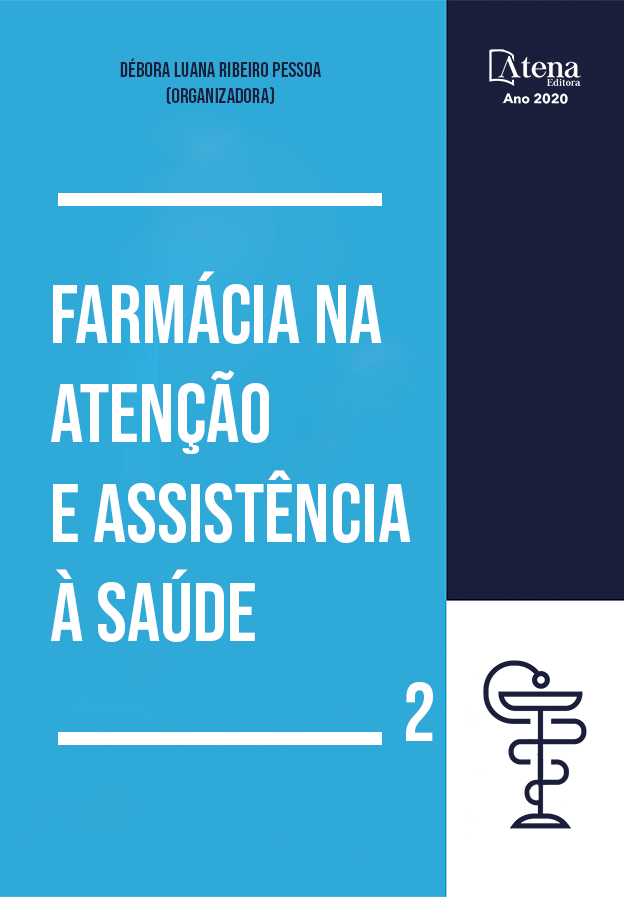
AVALIAÇÃO DO USO DE PLANTAS MEDICINAIS EM INSTITUIÇÕES SOCIAIS NO MUNICÍPIO DE GUARAPUAVA-PR
O conhecimento sobre plantas medicinais simboliza muitas vezes o único recurso terapêutico de muitas comunidades. O uso de plantas no tratamento e na cura de enfermidades é tão antigo quanto à espécie humana. No entanto, o emprego desses gêneros pode causar efeitos indesejados, bem como afetar o efeito de tratamentos convencionais. O presente trabalho teve como objetivo avaliar o uso de plantas medicinais em duas instituições sociais de Guarapuava-PR, com identificação de problemas relacionados ao uso de medicamentos (PRM’s), de modo a promover ações coletivas de educação em saúde, bem como o uso racional de medicamentos. Foi realizado um estudo descritivo-exploratório, com coleta de dados, através de consultas farmacêuticas, no período de abril a junho de 2019, utilizando-se a ficha farmacoterapêutica adaptada do modelo disponibilizado pelo Ministério da Saúde. Do total de entrevistados (58), 28% utilizam plantas medicinais. A população-alvo da pesquisa faz uso de uma grande quantidade de plantas, no total 26 espécies. As plantas mais utilizadas foram: Matricaria chamomilla (camomila), Mentha sp (hortelã), Passiflora sp.(maracujá) e Aesculus hippocastanum L. (castanha-da-índia). Foram identificados vários PRM’s associados a interação medicamentosa, como losartana e levotiroxina, uso incorreto, efeitos adversos e associação com automedicameção. Desta forma, o estudo demonstrou a necessidade de uma avaliação crítica das informações possuídas pela população-alvo, a fim de, através de ações de educação em saúde, esclarecer a função terapêutica de cada planta e, assim, reduzir os possíveis riscos à saúde por meio do uso racional dos medicamentos.
AVALIAÇÃO DO USO DE PLANTAS MEDICINAIS EM INSTITUIÇÕES SOCIAIS NO MUNICÍPIO DE GUARAPUAVA-PR
-
DOI: 10.22533/at.ed.73720151212
-
Palavras-chave: Assistência farmacêutica, Problemas relacionados à medicação, Fitoterapia, Automedicação.
-
Keywords: Pharmaceutical care, Drug-related problems, Phytotherapy, Self-medication.
-
Abstract:
Knowledge about medicinal plants often symbolizes the only therapeutic resource of many communities. The use of plants in the treatment and healing of diseases is as old as the human species. However, the use of these genera can cause side effects as well as impact conventional treatments. This work aimed to evaluate the use of medicinal plants in two social institutions located in Guarapuava-PR. We also proceeded with the identification of the drug-related problems (DRM’s), in order to promote collective actions of health education, as well as the rational use of medicines. A descriptive-exploratory study was carried out, with data collection, through pharmaceutical consultations, from April to June 2019, using the pharmaco-therapeutic form adapted from the model provided by the Brazilian Health Ministry. From the total of interviewees (58), 28% use medicinal plants. The target population of the research makes use of a large number of plants, in total 26 species. The most used plants were: Matricaria chamomilla (chamomile), Mentha sp (mint), Passiflora sp. (passion fruit), and Aesculus hippocastanum L. (horse chestnut). Several DRP's associated with drug interaction, such as losartan and levothyroxine, as well as incorrect use, adverse effects, and combination with self-medication were identified. Therefore, this study demonstrated the need for a critical evaluation of the information possessed by the target population in order to, through health education actions, clarify the therapeutic function of each plant and, thus, reduce the possible health risks through the rational use of drugs.
-
Número de páginas: 15
- Jean Rodrigo Santos
- Daniel de Paula


